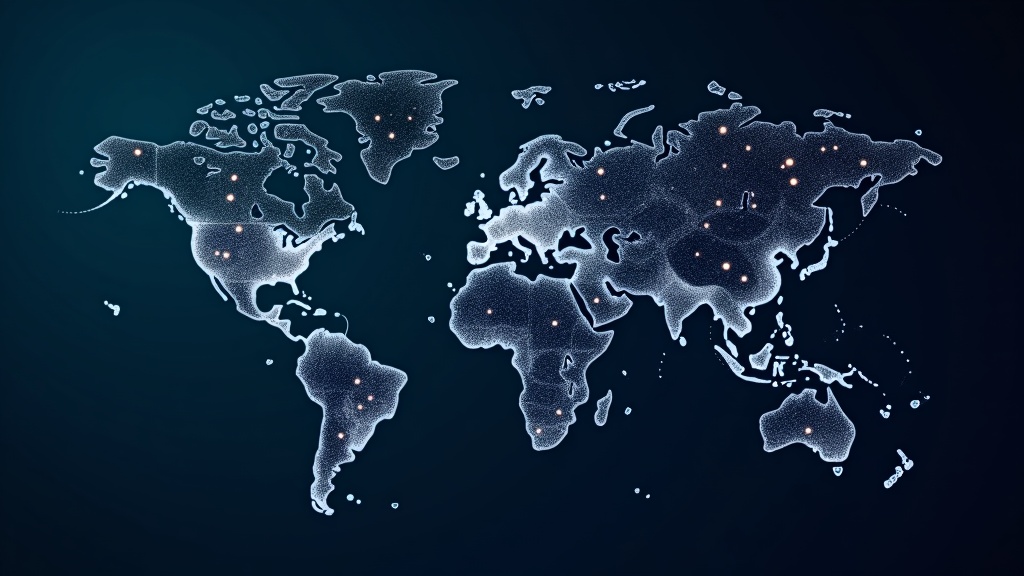How To Make Use Tariff And AI To Navigate Business Effectively
Applying tariffs and artificial intelligence (AI) in business can seem complicated at first. Both have the power to change how a company runs and competes, but clear strategies make them much more approachable. In this article, I’m going to break down why tariffs matter, how AI is changing business, and how you can combine both to make better decisions and stay ahead.

Understanding Tariffs: The Basics That Help Businesses Move Forward
A tariff is a tax on imports or exports between countries. When a government sets a tariff, it can change the price of goods coming in from other places. For businesses, this means products and materials can suddenly cost more or less, affecting budgets and plans. I’ve seen tariffs change overnight due to political changes or trade disputes, so staying informed is really important.
Tariffs have a long history in global trade. They started as a way for countries to protect local industries from too much foreign competition. Today, tariffs influence supply chains, pricing, and even product availability. For example, the continuing trade tensions between the US and China have affected electronics, agriculture, and other fields (Brookings).
If your company sources materials or products globally, fluctuations in tariffs can hit your operating costs directly. That’s why I recommend regularly checking updates from government resources or trade publications and keeping in close contact with suppliers.
The Role of Artificial Intelligence in Modern Business
Artificial intelligence, or AI, refers to machines or software systems that can work, learn, and solve problems in ways that feel intelligent. In business, AI is more than just hype; it’s a practical tool for handling big data, automating repetitive tasks, and finding patterns that people might miss. I’ve personally used AI tools to analyze sales data and forecast demand, which makes planning a lot easier.
AI can quickly scan huge amounts of information from global sources to keep you aware of legal changes, tariffs, or market changes. Many companies now use AI-powered analytics to predict how tariffs could affect product prices, supply timelines, and customer demand.
Some common AI tools in business include:
- Machine learning algorithms: These adapt over time, teaching themselves from past data so they can suggest smart actions.
- Natural language processing: This helps systems read and understand news or legal documents much faster than I ever could.
- Robotic process automation: This takes care of repetitive chores like placing orders or checking compliance forms.
Starting Out: How to Use Tariff Information to Guide Business Decisions
Understanding and tracking tariffs gives your business a head start. When I first began working with international suppliers, I quickly learned how fluctuating tariffs could flip profit margins. Here’s how I deal with tariffs in my own work:
- Know your sources: I always check reliable databases, like the World Trade Organization’s Tariff Database (WTO), for official rates and updates.
- Work with your finance and supply teams: Sharing tariff updates helps others prepare for possible cost increases or shipping delays.
- Use forecasting tools: I tie in both historical tariff patterns and projected trade talks to help estimate future costs.
Many companies set up alerts or dashboards to track tariff changes. Even smaller firms can use email notifications from trade associations, government websites, or industry groups for timely updates.
Getting Practical: Combining AI and Tariff Data for Better Outcomes
Combining AI and tariff data puts your business in a stronger position to avoid surprises. I like to use AI-powered platforms that sweep news sources and customs data for changes. These systems can spot new tariffs before traditional news reaches my inbox.
Here’s what I find helpful:
- Supply chain mapping: AI can help map out every step between your product and its components. If a new tariff affects a single part, the software flags it for my team to review.
- Simulation tools: Some platforms simulate how different tariff scenarios would change profits, sales, or delivery times. This helps me plan for the future, not just react to the present.
- Automated compliance checks: Instead of searching for every new legal code myself, I use AI to scan purchase orders and flag anything that’s out of line with current rules.
- Vendor evaluation: AI can compare suppliers by risk levels, response to tariffs, pricing, and reliability, which makes negotiations more straightforward.
Checklist for Harnessing Tariffs and AI
- Monitor the Sources: Set up alerts and keep watch on official tariff databases and AI-powered trade news aggregators.
- Keep Records Organized: Make sure your product lists, codes, and suppliers are up to date. AI works best when the input data is clean and well labeled.
- Test Different Scenarios: Use AI tools to run “what if” questions, such as “what happens if tariffs on steel double?” The results can help managers make smarter budget decisions.
- Automate Routine Tasks: Lean on AI for compliance checks, invoice audits, and customs paperwork. This frees up your team’s time for bigger projects.
- Train the Team: Share AI insights with both tech and nontech staff. Everyone benefits from a clearer understanding of how tariffs and automated tools affect their daily work.
This approach saves both time and money and often helps avoid stress from last-minute changes.
Important Factors to Think About Before Relying on Tariffs and AI
Not every challenge will be fixed by AI or better tariff awareness, but knowing the weak points helps you stay prepared. Here are the top issues I watch for:
- Data Quality: AI can’t work well without accurate and recent data. Double-checking numbers and sources helps maintain better outcomes.
- Integration Trouble: Sometimes older software doesn’t play nicely with new AI tools, causing delays or confusion. It’s best to run a small pilot before rolling out any company-wide changes.
- Regulation Changes: Governments sometimes announce tariffs with little warning, so building flexibility into plans is super important. AI can spot early signals but can’t predict every move.
- Overdependence on Automation: Relying only on AI, without human review, can create blind spots. I always double-check big decisions with a mix of automated reports and personal experience.
Data Quality
AI tools need solid inputs. In my own work, I’ve seen that incomplete or outdated records lead to missed changes and costly errors. Spending a little time each month cleaning up supplier lists and code tables pays off in fewer headaches later.
Integration Trouble
Bringing AI tools into existing systems can be tricky, especially for smaller companies or those with lots of old software. Starting with a single business process, like customs paperwork or order management, makes the transition smoother and builds confidence before wider adoption.
Regulation Changes
Trade relations can mix it up based on elections, world events, or diplomatic talks. When the US and EU revised tariffs on aircraft and machinery in recent years, many companies struggled to switch up quickly. Building regular checks and scenario planning into your processes helps you adapt when new policies appear.
Overdependence on Automation
AI is a strong assistant, but not a replacement for experienced judgment. When new tariffs are announced, AI platforms provide data, but I still talk with stakeholders and review the numbers myself before making recommendations to clients.
Even when systems are running well, regular reviews and personal oversight help catch what automation might miss. Small checks now can prevent bigger issues down the road.
Stepping Up Your Game: Advanced Strategies for Tariffs and AI
After setting up the basics, advanced businesses can use tariffs and AI for wider benefits. Here are some advanced strategies I’ve learned or seen in action:
Predictive Analytics for Cost Management: AI models can forecast cost spikes or drops before they hit the ledger. By testing different trade and tariff scenarios, finance teams can build flexible budgets and shorten reaction times.
Geopolitical Monitoring: AI-driven platforms scan news, government statements, and social media for early signs of policy changes. I’ve worked with teams that use these alerts to prepare alternative suppliers or shipping routes weeks in advance.
Risk Management Tools: By blending AI analysis with tariff trend data, companies get clearer views of supply chain risks. This helps prioritize which products or suppliers need new agreements, reducing dependency on unstable markets.
Custom Reporting and Dashboards: Advanced AI systems can tailor dashboards for executives, buyers, and operators, making big-picture trends and immediate issues easy to spot and share.
These strategies help move businesses from reacting to changes, to being prepared and agile when changes happen, keeping both costs and disruptions low.
Building a Strong Foundation: What Businesses Should Focus on When Connecting Tariffs and AI
Investing thoughtfully in both tariff management and AI integration gives a company a boost in agility and resilience. In my experience, businesses that focus on these areas end up with faster decision-making and less stress when policies or markets switch up.
From sourcing decisions to long-term planning, here’s how businesses use these technologies in real-world situations:
- Smart Sourcing: AI-powered tools find and compare suppliers from around the globe. By combining tariff data and pricing, businesses can switch suppliers faster when trade policies change.
- Dynamic Pricing: Retailers can use AI to update prices based on shifting costs tied to tariffs. For example, if shoe tariffs double, the systems can suggest new retail prices automatically, saving time and keeping margins healthy.
- Efficient Inventory Planning: AI can forecast shifts in demand due to tariffs and help optimize warehouse stock. This reduces the chance of being stuck with overpriced or unsellable products.
- Contract Negotiation: Data-driven insights on tariffs and supplier history improve the process of negotiating contracts, ensuring terms are robust against policy changes.
These business cases show that by connecting AI analytics with tariff knowledge, it’s possible to catch challenges earlier and act with confidence.
Questions I Get Asked a Lot
Companies and individuals often feel confused about integrating tariffs and AI. Here are some questions I hear regularly:
Question: How can AI actually help with monitoring tariffs?
Answer: AI tools can collect, read, and summarize trade reports and government bulletins from all over the world. This means you get faster warnings about any new tariffs that could affect your business.
Question: Is it expensive to get started with AI and tariff tracking?
Answer: It depends on the size of your business. There are affordable cloud-based tools for small companies. For larger companies, custom solutions usually pay for themselves by avoiding mistakes or missed deadlines.
Question: What’s the most common mistake firms make with tariffs?
Answer: Many companies ignore small tariff changes, only to find that smaller costs add up fast. Setting regular review periods helps catch issues before they grow.
Question: How do I convince my team to trust AI tools?
Answer: Share small wins early. For example, use AI to automate a routine compliance check, then show your team how much time it saves. Gradually, people become more open to new tools when they see real benefits.
Keeping Business Flexible Through Tariffs and AI
Using tariff intelligence and AI together makes your business more flexible. By staying alert to changes in the trade environment and giving your team the best automated tools, you improve your ability to handle surprises and find new opportunities. Regularly reviewing your systems, keeping information up to date, and mixing automation with human insight all help ensure your strategies work smoothly as the market changes.
Strong planning and practical tools go a long way in guiding any company through today’s trade landscape. Combining long-term experience with technology is the best way to stay prepared for what’s next in global business.
